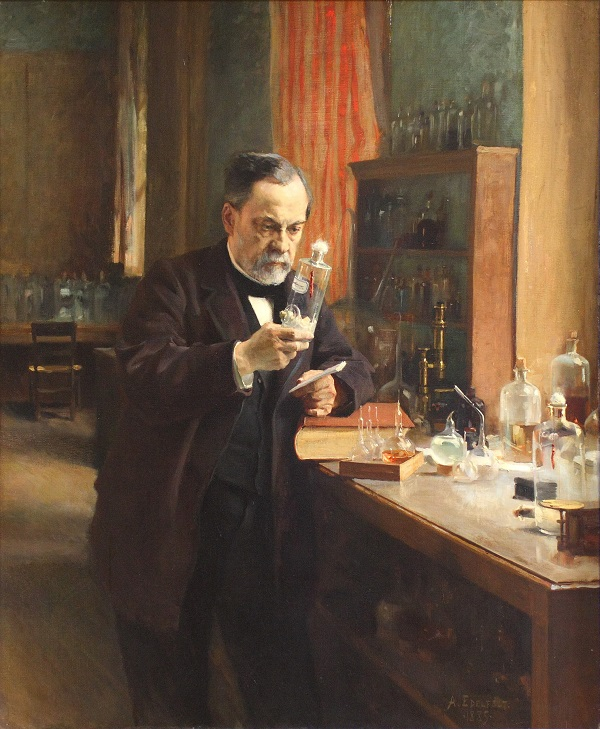The doctor visit to get your childhood vaccine shots can be fear-inducing and is the source material for many nightmares of children worldwide, and even their parents. But they play a vital role in modern healthcare and protect us from serious and deadly diseases. Lets take a look if vaccines were always so safe and when people began to use them.

Ancient Civilization
When smallpox struck the city of Athens in 430 BC during the Peloponnesian War, over 30000 inhabitants of the city died. In total, almost two-thirds of the crowded city was wiped out. The attacking force of Sparta even put their attacks on hold out of fear of contracting the disease. It was at this time that the Greek historian Thucydides observed that the disease struck the hardest on places that were more densely packed in the city and that physicians were more likely to get infected. This led him to the conclusion that the disease could transfer from an infected person to a healthy person.
He also understood that people who survived the disease were immune afterward, with his words: "But those that were recovered had much compassion both on them that died and on them that lay sick, as having both known the misery themselves and now no more subject to the danger. For this disease never took any man the second time so as to be mortal".
Unfortunately, Thucydides his insights did not have a lasting influence and were mostly ignored. Ancient Greek medicine was interwoven with religion and people blamed the gods instead of believing the disease to be of natural cause.
Medieval China
Records are not entirely clear where vaccination was first used, but most sources date it back to the 10th century and suggest either China or India. The first clear evidence of the use of a form of smallpox inoculation comes from the Ming dynasty pediatrician Wan Quan in 1549.
Chinese doctors used smallpox material from patients that only showed mild symptoms, as the use of material from patients with the full-blown disease image was considered far too dangerous and could lead to serious implications. The inoculation was done by grinding dried scabs and then blowing the powder straight into the patient's nose with the use of a pipe. After the patients got symptoms of the disease, they were kept separately until they were considered cured. This early version of inoculation is called variolation and similar methods were reported to be used in Africa, Turkey and Greece. However, in western Europe people did not believe that this technique worked.
The West

Lady Mary Wortley Montagu was married to the British ambassador to Turkey. On her travels there she saw the variolation technique being used effectively, and she even had her son inoculated. After she came back from the Ottoman empire she told about everything she saw, but the information was received with disbelief and skepticism. As during the years the royal family began to see the benefits of variolation, general acceptance among the people started to grow.
Because the process of inoculation known at that time had some serious risks, the physicians of that time were already searching for a better method of vaccination. By research of Dr. John Fewster, it was already known that an infection with cowpox prevented a person from getting infected again with smallpox. He noted this with two brothers who were inoculated, but only one of them reacted to it. On further investigation, he found out that one of them contracted cowpox earlier.
In the years following there were multiple physicians experimenting successfully with cowpox vaccines, but it was not until the work of Edward Jenner that the procedure was considered proven working. Edward Jenner researched the folklore tale that milkmaids who contracted cowpox, never were the victims of smallpox. He experimented on children, even his own son, and published a paper in 1798. The general public at first ridiculed Jenner as you can see on this caricature of people turning into cows, but this changed as vaccines were proven to appear working and became accepted worldwide. After his discovery, he gave up his normal medical work and continued his study on vaccination. In 1821 King George IV appointed him physician extraordinary and he was made major of Berkeley.

The chemist Louis Pasteur did some groundbreaking research in immunology in the 19th century. While Jenner successfully found the vaccine for smallpox, Pasteur lay the foundation for modern-day vaccination using weakened versions of the disease. At first, his research was focused on animal diseases, he successfully inoculated chickens against chicken cholera. After his success in the field, he found out a way to weaken anthrax bacteria himself to produce a working vaccine. This finding revolutionized the study in immunology and sparked the interest for more research in the field. After his discovery, Pasteur was asked to help a little boy that was bitten by a rabid dog. After he experimented with a weakened version of the virus on animals, he then inoculated the boy with the vaccine and he was cured. As a result of his risky, but successful endeavor in this modern world rabies is not the risk anymore that it used to be.

Thanks to this evolution in medicine, the World Health Organisation declared smallpox to be eradicated in 1980 and we can declare this horrible disease extinct. The research in vaccines and immunology is still going strong and it is needed to prevent more infectious diseases and to treat chronic diseases. The goal to eradicate Polio was set at 2000, sadly we are not there yet, but with every vaccine given out, the goal gets closer and closer and hopefully we can soon also reach that milestone in the battle against deadly diseases.
Hi! I am a robot. I just upvoted you! I found similar content that readers might be interested in:
https://closeuphistory.com/history-of-vaccinations/
Downvoting a post can decrease pending rewards and make it less visible. Common reasons:
Submit